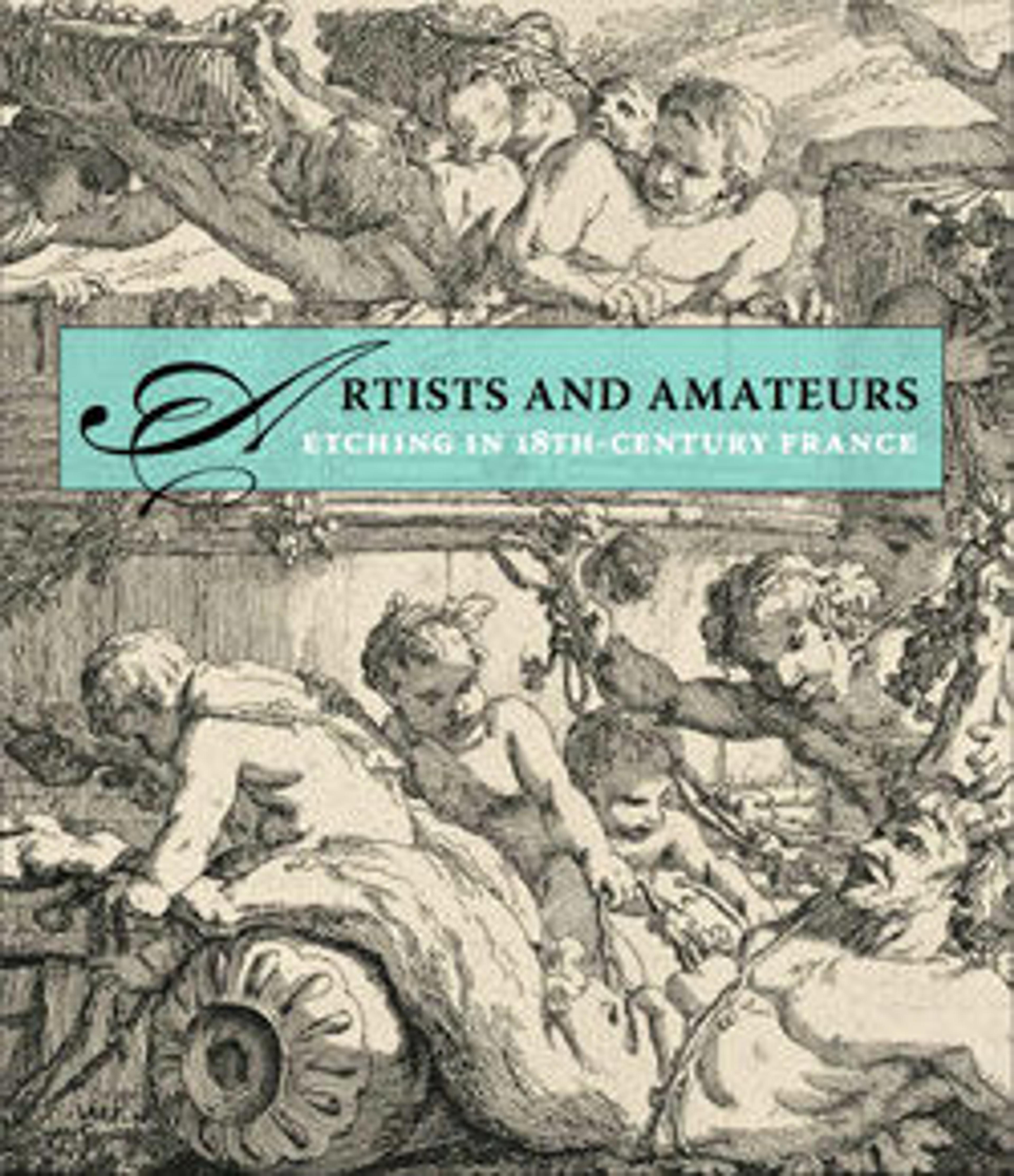The Washerwomen (Les Laveuses)
This stunning print displays Jean-Baptiste Le Prince’s mastery of aquatint, a tonal intaglio print technique, for which he developed a unique method in 1768. To produce an aquatint the printmaker dusts the surface of a metal printing plate with resin, which is then fused to the surface with heat. When exposed to acid, the metal around and between the resin particles is corroded, producing a pitted surface on the metal printing plate which reads as a uniform wash of tone in the final print. The longer the resin covered surface is exposed to acid, the deeper the surface pitting, and the darker the printed tone.
While Le Prince did not invent aquatint, he perfected a method of working positively with tone on the plate. By first covering the plate with varnish and then dissolving this covering by painting with a solvent, he could apply aquatint resin only where he had drawn. He repeated this process multiple times to achieve the desired range of tones. Evidence of this process is visible in certain details, such as the white edges between different tonal areas. These slight gaps, for example in the clouds in the upper left or within the trees to the right of the chimney, indicate each of those tones was produced by a separate application of resin which did not perfectly align. To guide this multistep process Le Prince also developed a method for achieving a graduated tonal scale. He used test strips to indicate the tone produced by increasing exposure to the corrosive acid. With the help of his tuning fork, as he called it, to calibrate tone, Le Prince was able to achieve six distinct shades in this print.
In The Washerwomen, Le Prince employs both his unique application method and his nuanced tonal scale to particularly dramatic effect. He varies, for example, the strokes of aquatint to capture alternatively the flat sheen and slight ripples of the water, and the mottled bark of the illuminated tree on the right. Plumbing the depths of aquatint, he highlights the trees’ different forms against the cloud-swept sky and the dark crevices in the swampy ground. Tone saturates and structures the pastoral scene in a true celebration of aquatint.
While Le Prince did not invent aquatint, he perfected a method of working positively with tone on the plate. By first covering the plate with varnish and then dissolving this covering by painting with a solvent, he could apply aquatint resin only where he had drawn. He repeated this process multiple times to achieve the desired range of tones. Evidence of this process is visible in certain details, such as the white edges between different tonal areas. These slight gaps, for example in the clouds in the upper left or within the trees to the right of the chimney, indicate each of those tones was produced by a separate application of resin which did not perfectly align. To guide this multistep process Le Prince also developed a method for achieving a graduated tonal scale. He used test strips to indicate the tone produced by increasing exposure to the corrosive acid. With the help of his tuning fork, as he called it, to calibrate tone, Le Prince was able to achieve six distinct shades in this print.
In The Washerwomen, Le Prince employs both his unique application method and his nuanced tonal scale to particularly dramatic effect. He varies, for example, the strokes of aquatint to capture alternatively the flat sheen and slight ripples of the water, and the mottled bark of the illuminated tree on the right. Plumbing the depths of aquatint, he highlights the trees’ different forms against the cloud-swept sky and the dark crevices in the swampy ground. Tone saturates and structures the pastoral scene in a true celebration of aquatint.
Artwork Details
- Title:The Washerwomen (Les Laveuses)
- Artist:Jean-Baptiste Le Prince (French, Metz 1734–1781 Saint-Denis-du-Port)
- Date:1771
- Medium:Etching and aquatint printed in brown ink
- Dimensions:sheet: 13 3/8 x 9 9/16 in. (34 x 24.3 cm)
- Classification:Prints
- Credit Line:The Elisha Whittelsey Collection, The Elisha Whittelsey Fund, 2010
- Object Number:2010.543
- Curatorial Department: Drawings and Prints
More Artwork
Research Resources
The Met provides unparalleled resources for research and welcomes an international community of students and scholars. The Met's Open Access API is where creators and researchers can connect to the The Met collection. Open Access data and public domain images are available for unrestricted commercial and noncommercial use without permission or fee.
To request images under copyright and other restrictions, please use this Image Request form.
Feedback
We continue to research and examine historical and cultural context for objects in The Met collection. If you have comments or questions about this object record, please contact us using the form below. The Museum looks forward to receiving your comments.
